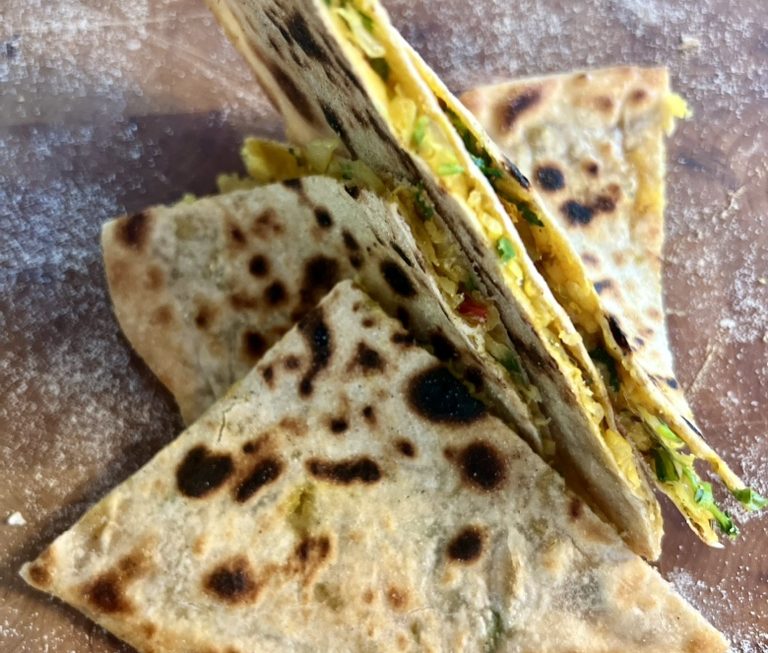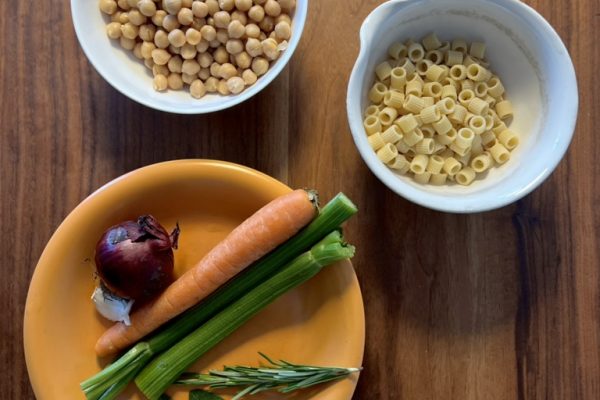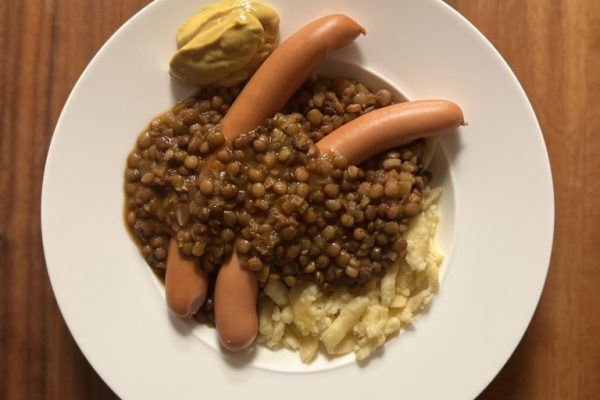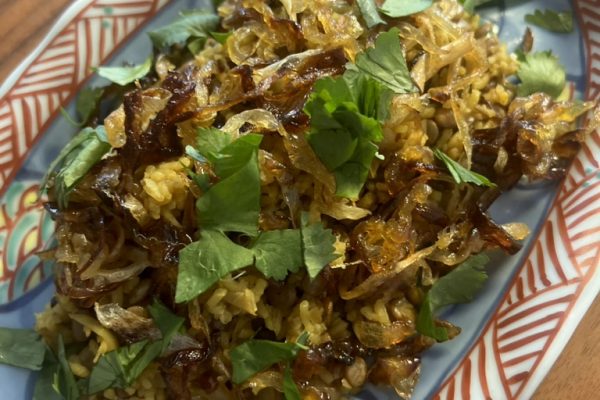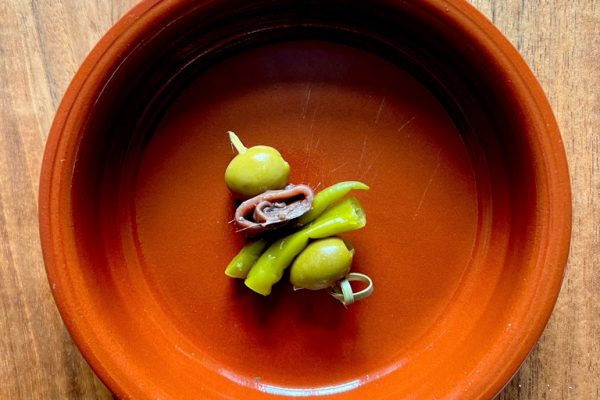Indian Chapati or Roti (meaning “flat” in Urdu and Hindi respectively) are flatbreads made from Atta, a wholemeal wheat flour. They are the simplest form of Indian bread.
The word paratha is made up of “parat” and “atta” and means “layers of dough”. These layers are created using ghee, i.e. clarified butter, or different fillings.
Common fillings include potatoes, cauliflower and other vegetables, occasionally also meat.
For the dough, only flour with water and sometimes a little ghee or oil and salt are used. After a short rest, the dough is rolled out thinly and baked on both sides on a “tawa”, an iron plate.
However, it can also be prepared without Indian atta and in a large pan. Here we show you how to do this using our favourite filling – radish.
The dough:
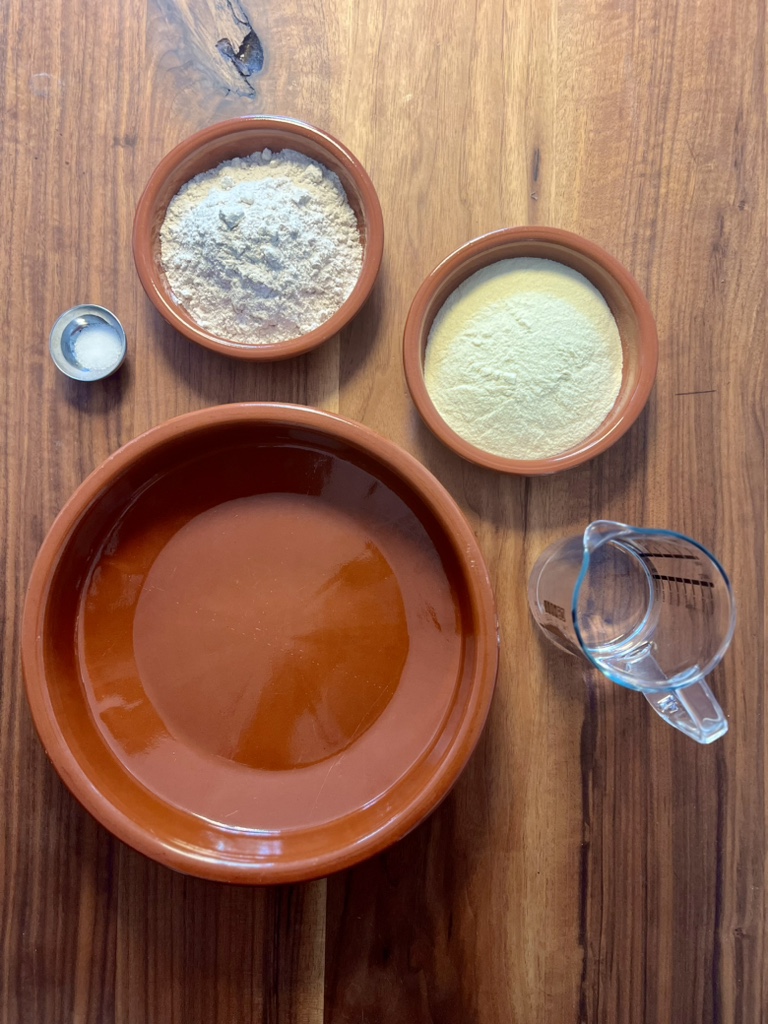
Flour is always a dilemma in international comparison, because not only are there very different types of flour everywhere, they are also classified and labelled very differently. In Germany, wheat flour type 1050 is the most suitable type. This is a darker wholemeal flour with a protein content of around 10 – 12 %. For a result that is particularly close to Indian atta, this type of flour is mixed with a slightly coarser flour, which is therefore particularly loose and free-flowing. In Germany, this type of flour is called instant flour or double-textured (“doppelgriffig”) flour. We achieve the best results with a ratio of 2:1.
In addition to the two types of flour, you only need a little salt and water. It is easier to work this dough in a shallow dish than in a bowl and it has to be done by hand – it is not suitable for a food processor, which would probably even be damaged.
Flour and salt are mixed together and then the water is added. It is very easy to overestimate the amount of water needed, so stick strictly to the quantities given at the end of this recipe. Mix everything together with your fingers in a circular motion until the flour has absorbed the water and forms flakes that stick to your hands.
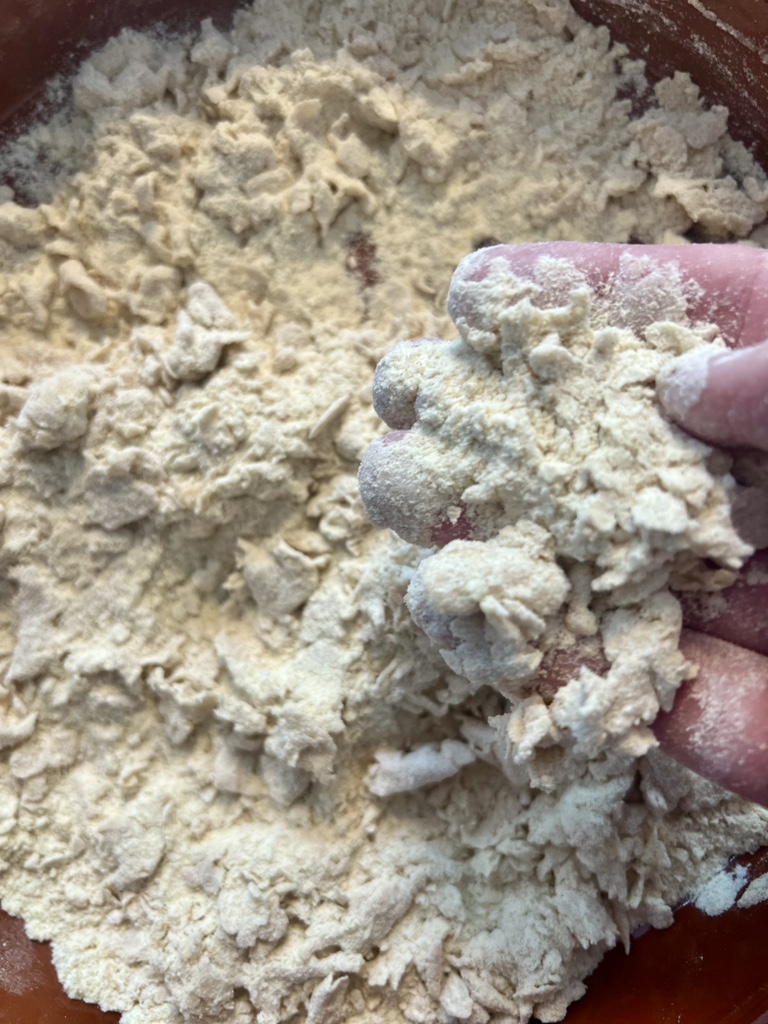
From now on, knead vigorously for no less than 10 minutes. That’s how much work is needed to make a smooth dough. If the dough is not worked properly, the bread will not work either – there are no shortcuts here. So the dough flakes are clumped together in the hand, pressed to the bottom and pulled flat again with the heel of the hand, as we have already explained here.
Slowly the dough comes together…
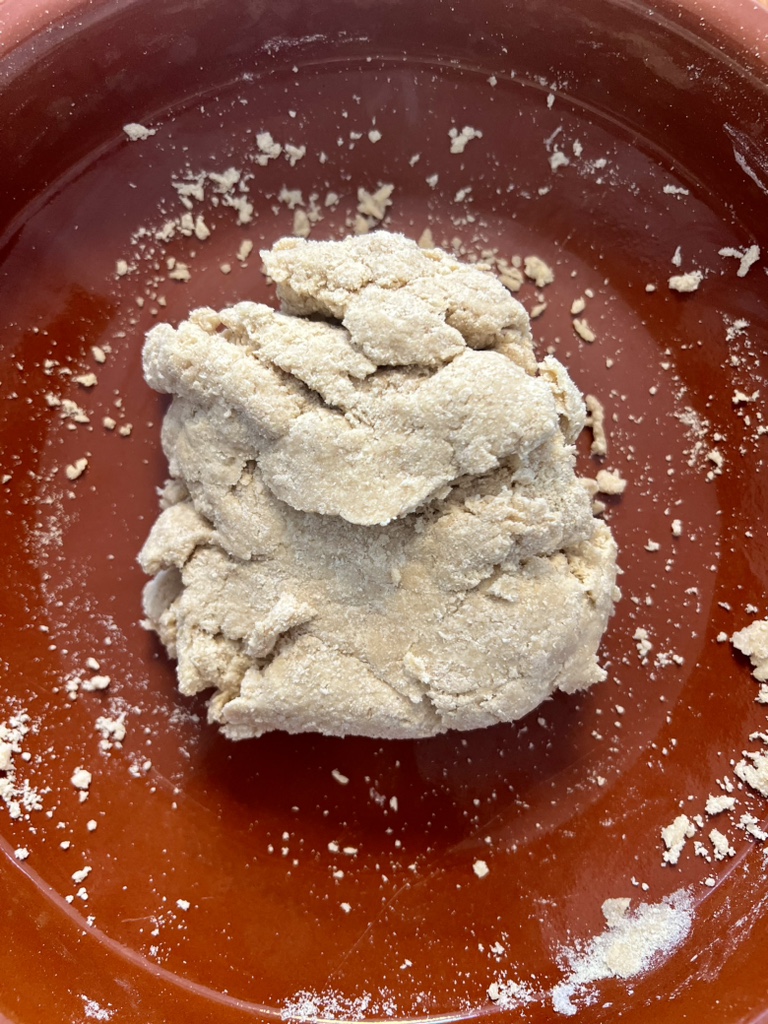
…until it has become homogeneous, even if not yet completely smooth. If this does not work at all, an extremely small amount of water is missing. This must not be poured on, otherwise it would immediately be too much. Instead, just wet the hand you are (currently) kneading with and continue working.
Once you have finally achieved this, a little oil is added and worked in with further kneading.
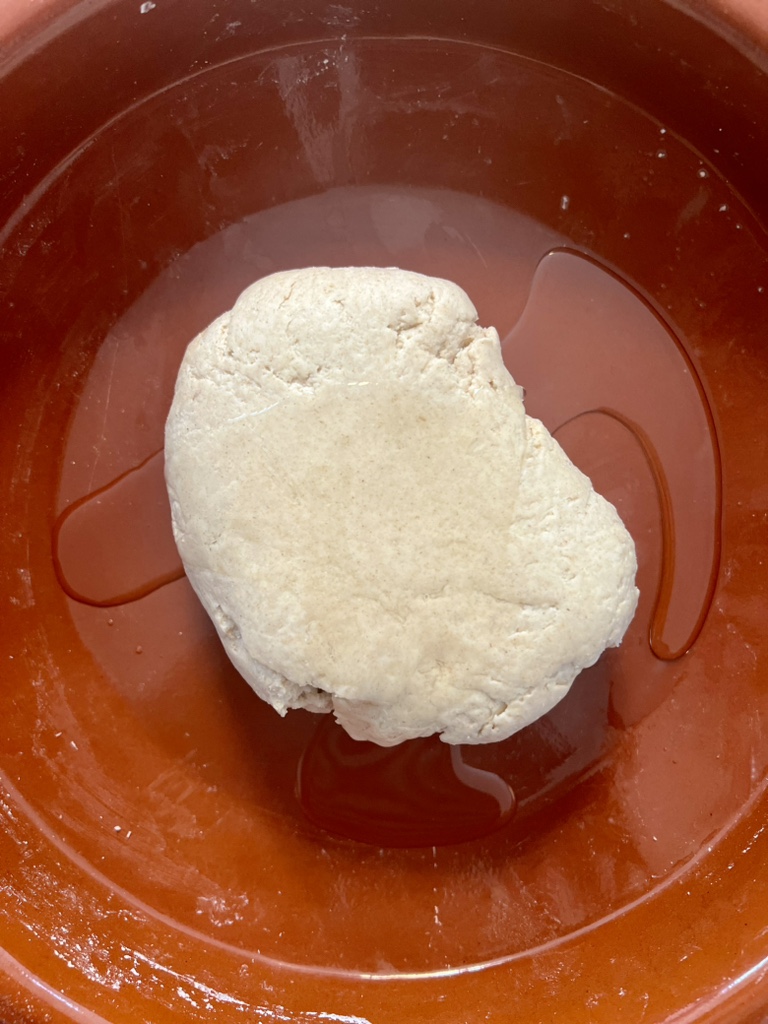
Now it only takes a short time until you can form a smooth, still somewhat firm ball of dough…

… which is covered with a clean, damp cloth and left to rest for at least 10 minutes, preferably half an hour. During this time, the dough relaxes and becomes much softer.

After this resting time, you could bake chapati or roti from it. But our recipe goes further.
The filling:
The ends of radish are cut off, it is peeled and grated into coarse strips, preferably directly into a narrow-meshed sieve over a bowl. Sprinkle with salt and mix with the grated radish.

Almost immediately the radish starts to lose liquid. So it has to stand for at least 10 minutes, more time is not a problem and we tend to wait for 20 minutes.
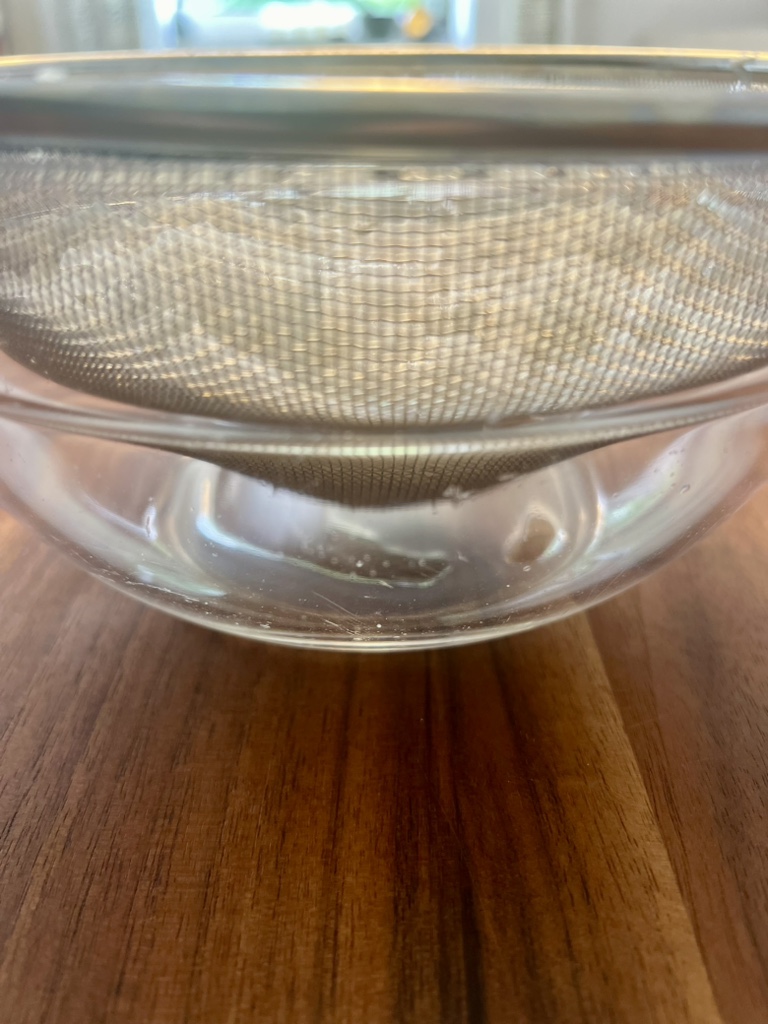
Then the radish is squeezed very, very vigorously with your hands until it appears almost dry. Don’t worry, it still contains plenty of liquid.
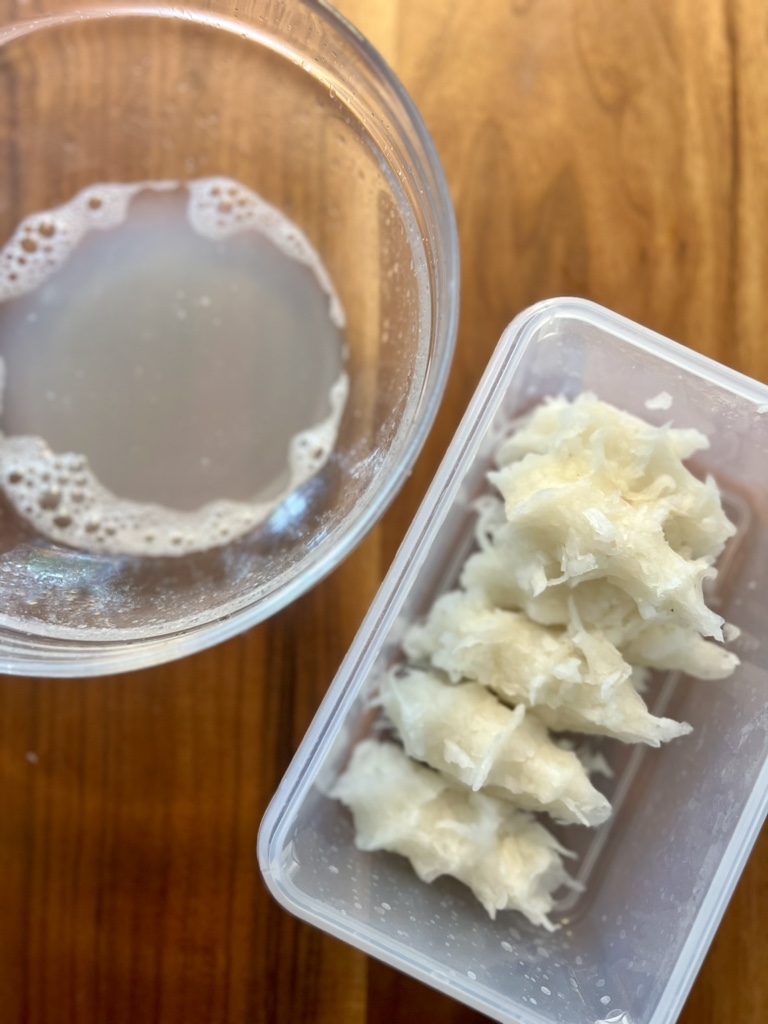
The typical Indian seasoning consists of grated ginger and finely chopped green chilli, a little salt, dried mango powder (“amchoor”), ground coriander, Kashmiri chilli powder (very red and not very hot), cumin seeds, ajwain (carom) and fresh coriander.
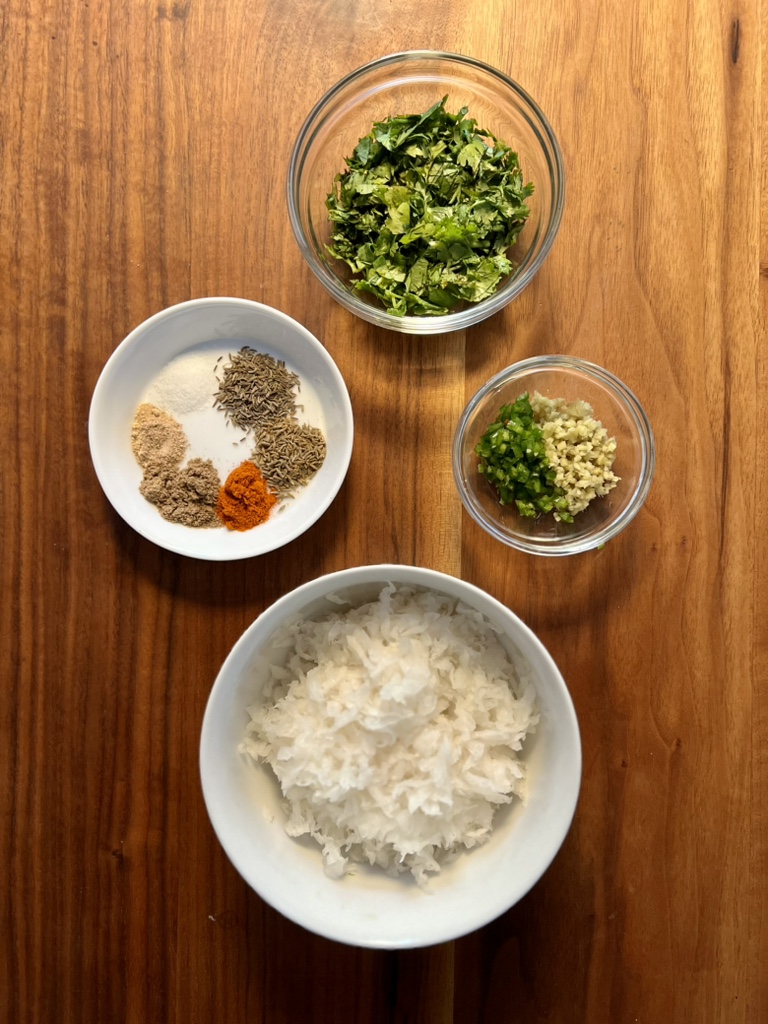
Once you have mixed all this with the radish, don’t leave it to stand for long, as the salt and spices will immediately release more liquid. So it is time for baking immediately:
The usual technique for most types of paratha is to first shape a piece of dough just a little flat, add ghee or other ingredients on top, enclose this filling by folding into a dough ball and then roll into a larger flatbread.
This does not work so well with mooli paratha because the radish releases more liquid so quickly. Therefore, always take two small pieces of almost 40 g from the prepared dough and roll them out on a little flour to form more or less round patties about 10 cm in diameter. Place a heaped tablespoon of the radish filling on one and brush the edges with a little water so that the dough sticks together.
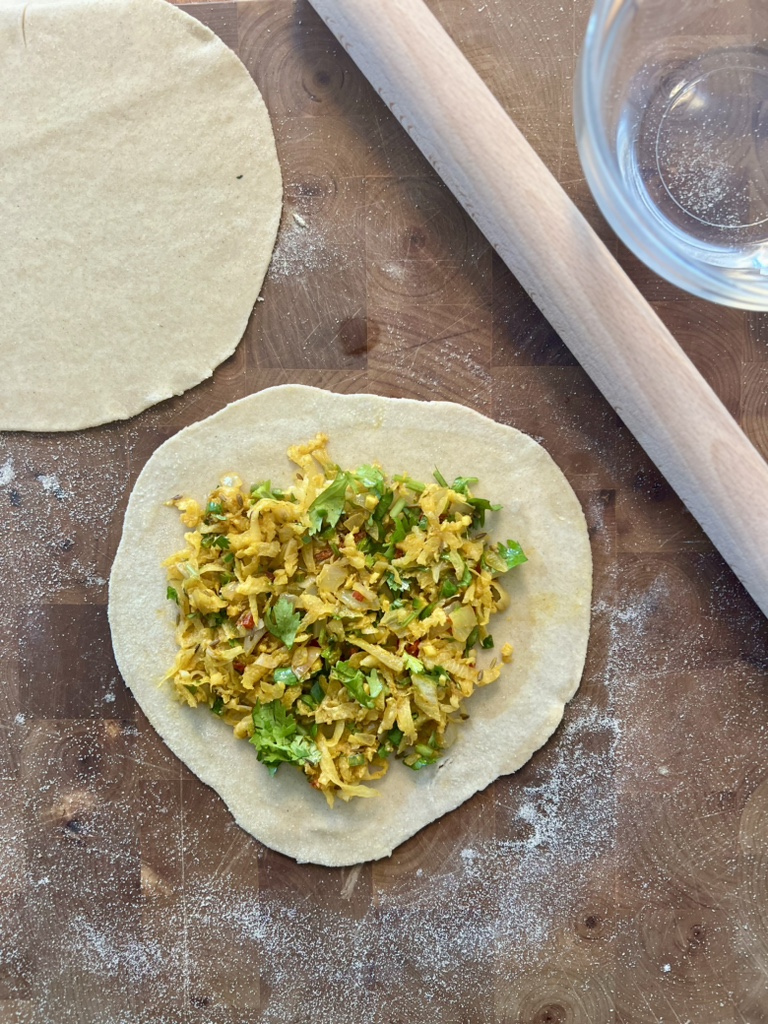
Then place the second small patty on top and press down without trapping air in between. There’s no need to be delicate here. Now the paratha can easily be rolled out into a much larger and thinner flatbread and it doesn’t matter if pieces of the filling seep through the dough in some places.
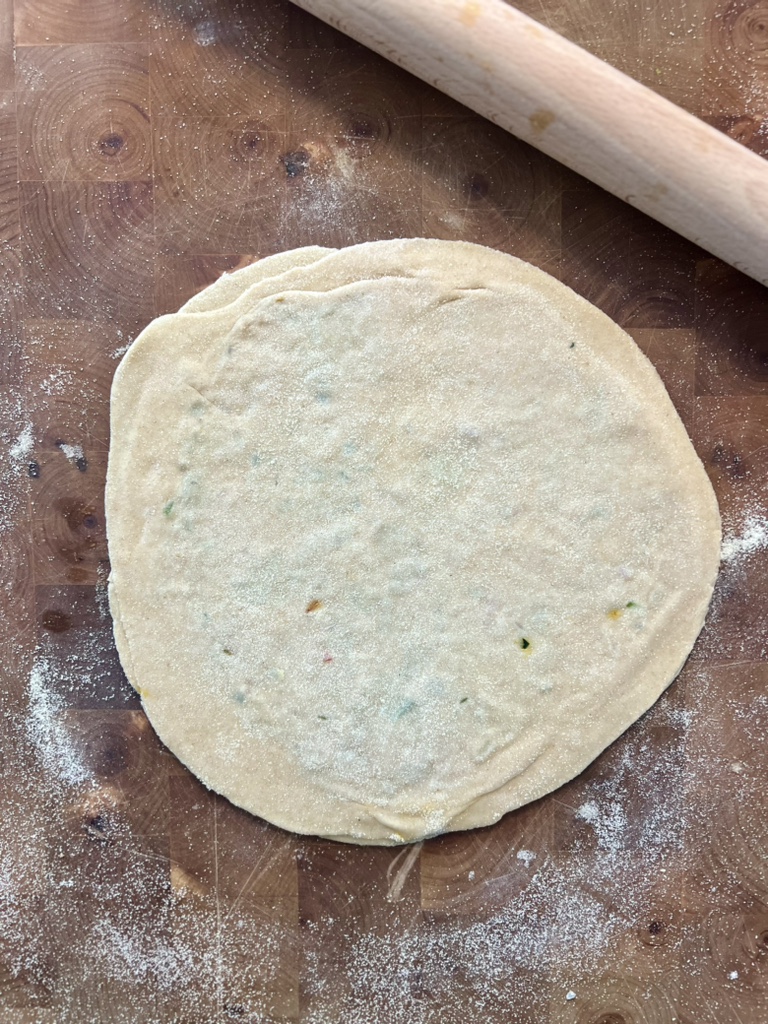
A large pan is heated to a high temperature (8 out of 10 for us) and the paratha is first baked on both sides for about 30 seconds so that the dough begins to dry.

Now you have to make sure that all areas of the dough come into good contact with the pan. The best way to do this is to use kitchen paper folded several times to press the paratha against the base of the pan, especially at the edges. We have described this technique in more detail here for Arabic flatbread.
After a further minute or so on each side, dark spots form.
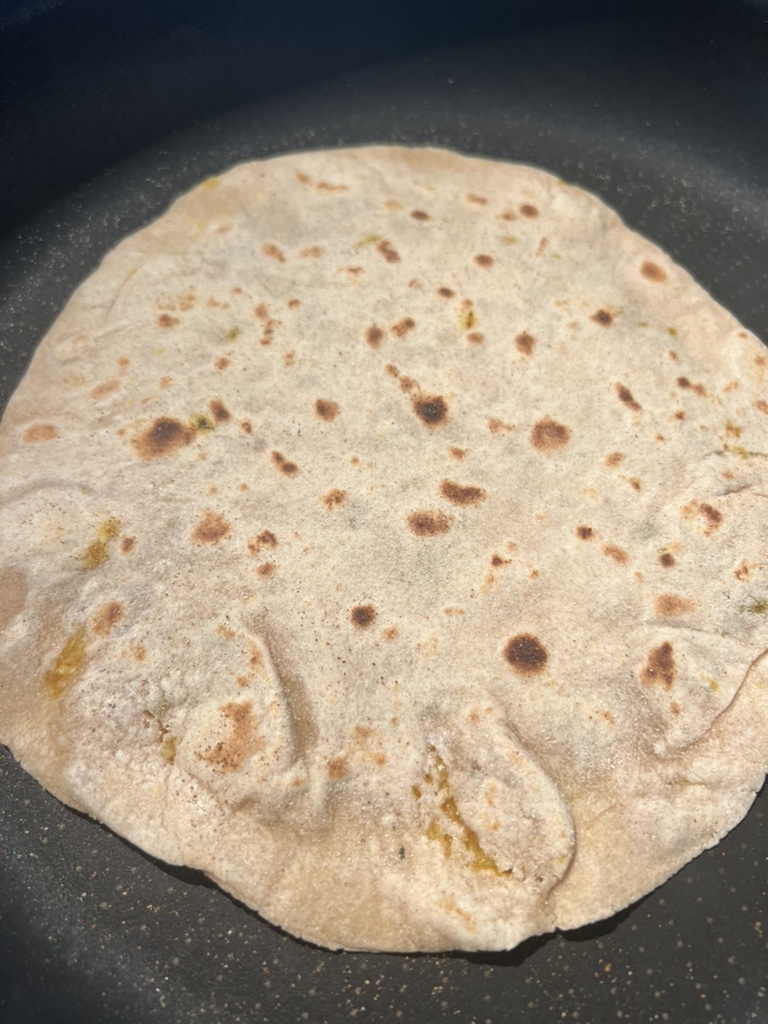
Now add a little ghee or oil and fry the paratha until it is intensely fragrant and browned.
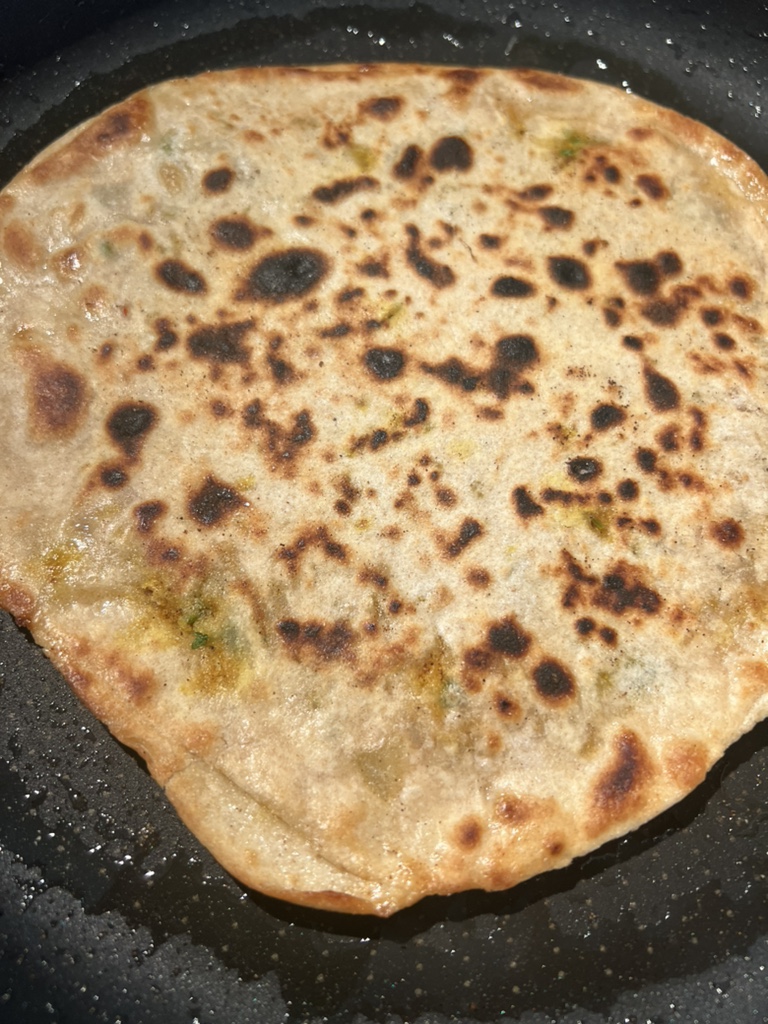
The paratha are extremely hot and need to cool briefly, but taste best when eaten fresh.
They are crispy, juicy and incredibly flavourful. An ancient and yet very special dish!
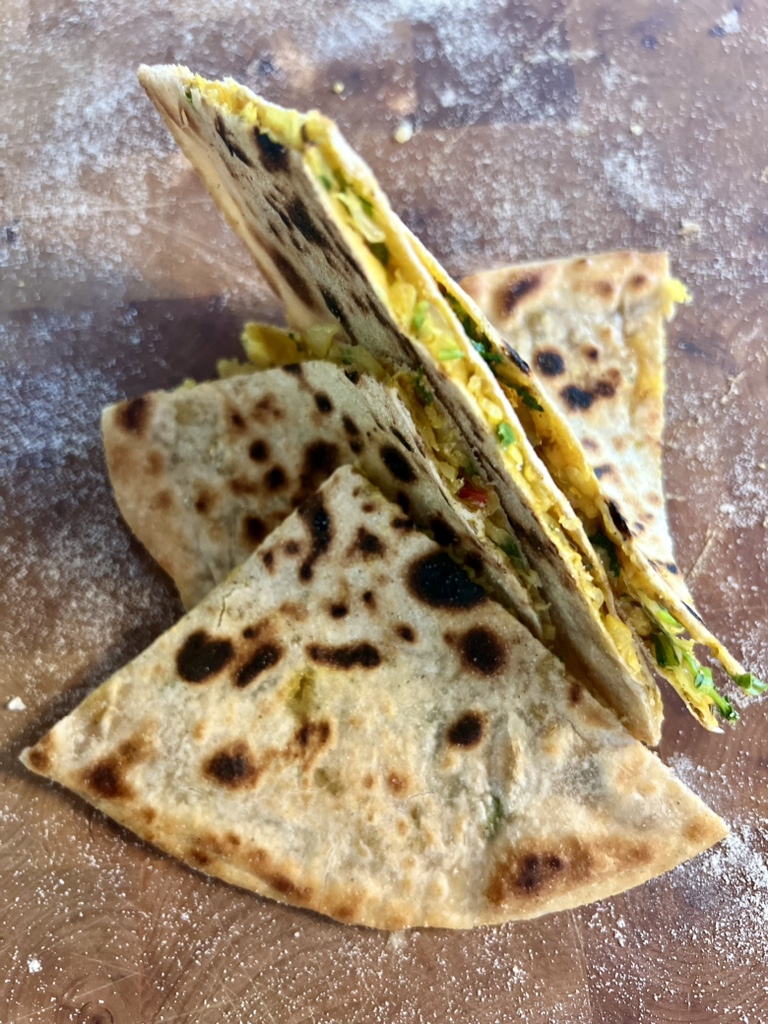
Enjoy.
And may the taste be with you.
Ingredients (for approx. 16 chapati or 8 paratha):
For the dough:
200 g wholemeal wheat flour (type 1050 or similar)
100 g coarser wheat flour (instant flour or similar)
– Alternatively: 300 g wholemeal wheat flour –
½ tsp salt
200 ml lukewarm water
2 tbsp neutral oil (or liquid clarified butter)
Plus some flour for dusting
Plus a little oil (or clarified butter) for frying
For the filling:
1 – 2 radishes, not less than 500 g in total
1 tsp salt
2 cm ginger, peeled and finely grated
1 – 2 fresh green chillies, seedless and finely chopped
½ tsp salt
½ tsp mango powder (“amchoor”)
1 tsp ground coriander
1 tsp Kashmiri chilli powder
½ tsp cumin seeds
½ tsp ajwain seeds (carom)
1 handful of coriander leaves, roughly chopped
